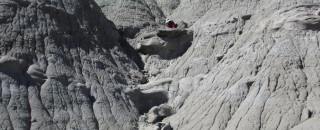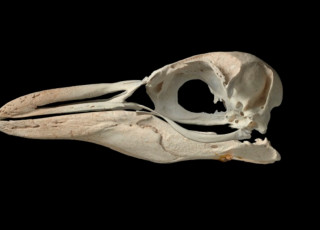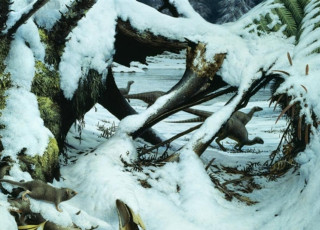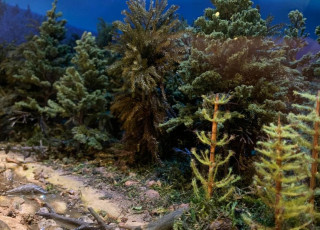Polar DinoFest: Karen Chin
By Riley Black
When we try to conjure an image of what the Cretaceous world was like, says University of Colorado Boulder paleontologist Karen Chin, we often think of habitats in tropical areas of the world. But what about polar environments? The ancient Cretaceous climate was warmer than that of today, populated by organisms that don't have modern equivalents, and that was as true in the seas as on land. Thankfully, the fossils deposited in the prehistoric seas of the ancient Arctic can give us a few clues about what these mysterious environments were like.
One of the areas paleontologists have been searching for Cretaceous clues on Devon Island in the high Canadian Arctic. Chin was asked to study fossils from the site given her expertise analyzing coprolites - or fossilized feces - uncovered at this site. These fossils are full of information about what organisms were eating and are a great way to gain information about prehistoric food webs. But there's much more preserved in this pocket of what was once a prehistoric ocean. Everything from fossil plankton and petrified wood to the bones of vertebrates help fill in what this place was like more than 73 million years ago.
Putting all these pieces together help reveal entire ecosystems, both in the water and along the shore. The pieces of petrified wood, for example, were from tall trees that grew near the shore and indicate the presence of forests. In terms of the coprolites, Chin notes, the researchers noticed these fossils came in two types - ones filled with green sand and some invertebrate parts, and some that were high in calcium phosphate that were then fed upon by invertebrates that lived on the sea floor. Exactly what creatures left the coprolites behind isn't known, but the information gleaned from those fossils nevertheless highlights ecological connections between species. Fossils like these don't just give an idea of who was around in a particular habitat, but how organisms interacted with each other.
The fossils from Devon Island "have pointed out a lot of interesting things that we didn't know before," Chin says. The emerging picture is of a much, much warmer Arctic habitat where marine reptiles swam and invertebrates feasted on what the larger vertebrates left behind. There's so much more to find, Chin notes, and each piece will add that much more detail to a long lost ocean world with no equivalent in our own time.
Click Here to Explore More of NHMU's Polar DinoFest
Riley Black is the author of Skeleton Keys, My Beloved Brontosaurus, Prehistoric Predators, and a science writer for the Natural History Museum of Utah, a part of the University of Utah in Salt Lake City. Our mission is to illuminate the natural world and the place of humans within it. In addition to housing outstanding exhibits for the public, NHMU is a research museum. Learn more.



